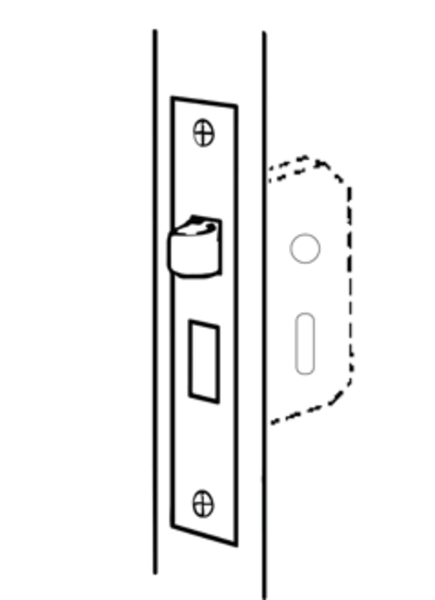What function do you need for your door hardware?
Functions indicate how your doorset will operate. There are roughly seven different types of functions including privacy, passage, single dummy, double dummy, mortise, entry set and deadbolt.
A passage function is the most common function for doorsets. Passage sets turn and operate a latch, but do not lock. This function is ideal for rooms that do not need a lock including closets, pantries, laundry rooms and hallways.
For interior doors requiring a lock, a privacy function is essential. Privacy locks do not provide security but do keep people from unexpectedly entering a room. They are only for use on interior doors. This function works well with bathrooms, bedrooms and any other room in your house where privacy is important and needed. All Nostalgic privacy locks can be locked using a push pin from the inside and can be unlocked from the outside using the emergency key.
Both single and double dummy doorsets are non-operating. These functions are used only on doors where a pull is needed–there is no latch and they do not turn or lock. Single dummies are surface-mounted on doors without any cross-bores (blank doors). Likewise, double dummies can be mounted on doors without cross-bores. But, double dummies are also available for doors with cross-bores. Dummy functions are ideal for pantry doors, closet doors or side-by-side French doors.
Typically found in vintage homes, an interior mortise lockset operates in the same fashion as a privacy lock, but uses a skeleton key instead of a push button or may have a thumb-turn on the interior. (Please note that interior mortise locks provide little security when used on exterior doors, as skeleton key locks are easy to pick.) However, installation is very different. A mortise lock requires a rectangular pocket to be machined into the door edge. The lock is then installed into this pocket.
Older mortise locks were made by many different lock manufacturers; therefore, the measurements can vary. If you want to replace the lock itself, or just the hardware trim on the door, you will need to measure several critical dimensions. These dimensions are shown on the link below.
Example of a mortise lock rectangular pocket:
For residential front doors, entry (grip) sets are commonly used because they provide both beauty and security. Entry sets are designed to withstand the elements, with heavier construction and long-lasting finishes. Nostalgic’s solid brass entry (grip) sets come with a matching deadbolt and a variety of grip options (C-Grip, F-grip and S-Grip). The combination of a passage function and a deadbolt is also used as an entry set when cost is a significant consideration.

Deadbolts are the front line of security for homes, and work great for garage doors, basement doors and other exterior doors. They function with a key on the outside and a thumb-turn on the inside (single cylinder). Double cylinder versions (keyed on both sides) are used less often now, as they don’t meet many local fire codes.
Published on: March 28th, 2018
Like what you read? Need more information? Finding the appropriate hardware for historic projects can be a challenge. We’ve asked industry expert and Director of Product Development at Nostalgic Warehouse, Bill Metzger to help with the answers. Click here to see more.







